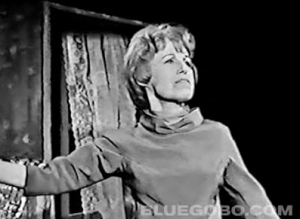Dear Prodigy pioneers,
 This week and next, the undergrad dorm where I’m a resident tutor is putting on their annual musical—this year Guys and Dolls. And complete Carrie Bradshawesque narcissist that I am, that got me thinking back to my own theatrical past, specifically trying out for my high school’s production of Guys and Dolls my freshman year. The task, of course, was geared to traumatize the weak of vocal skill—sing the opening verse of “Luck Be A Lady.” Simple enough, except I started about two octaves too high. I dropped out a few days later, and so my on-stage career ended. I found a few years later, that I much preferred a place behind the scenes, in the audience, or, apparently, at the computer.
This week and next, the undergrad dorm where I’m a resident tutor is putting on their annual musical—this year Guys and Dolls. And complete Carrie Bradshawesque narcissist that I am, that got me thinking back to my own theatrical past, specifically trying out for my high school’s production of Guys and Dolls my freshman year. The task, of course, was geared to traumatize the weak of vocal skill—sing the opening verse of “Luck Be A Lady.” Simple enough, except I started about two octaves too high. I dropped out a few days later, and so my on-stage career ended. I found a few years later, that I much preferred a place behind the scenes, in the audience, or, apparently, at the computer.
The digital archive, in fact, contains a host of valuable sites dedicated to the performing arts. For an appetizer, try the Hansen Collection from UNC. It includes beautiful broadsides, like the one to the right, from an 1870 Boston performance of Rip Van Winkle, adapted by Dion Boucicault (more on him here). You’ll also find correspondences, posters, and some stirring photographs. And if you were wondering, celebrity sponsorship didn’t start in the twentieth century. Witness below, soprano Minnie Hauk hawking the Warner Brothers’ corsets. (I initially misread “Abdominal” and “Abominable.” So much for truth in advertising).
Over at the University of Louisville, the Macauley’s Collection chronicles the life of a family-owned theater in the Bluegrass State. The archive includes photographs of countless actors unknown today, including Anna Boyd, dressed below left as a man. For cross-dressing in the other direction, you can see a photograph on the right of once-famed performer Julian Eltinge. (Check out Sharon Ullman’s excellent chapter on Eltinge in Sex Seen to learn more, and click here for yet more cross-dressing from the Macauley collection).
Eager for other images of 19th century actors and actresseses? Try this collection of cartes-de-visite from the University of Washington. There you’ll find, lo and behold, photographs of Mr. Joseph Jefferson himself in his role as Rip Van Winkle, before and after his big sleep. (How do you like that for continuity, dear reader!)
As Benjamin McArthur explores in his well-received study, The Man Who Was Rip Van Winkle, made his name playing the famous napper, and became one of the best-known comedic actors of the American stage.
Alas, that’s all for this time.
Curtains down,
Stephen










